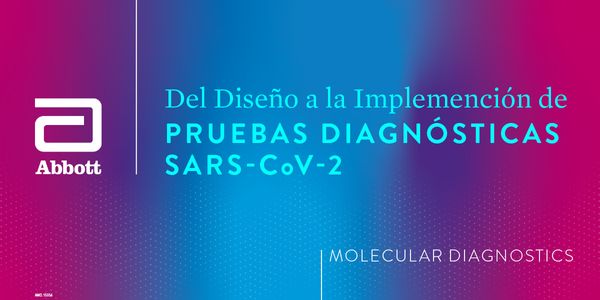Environmental Microbiology
Environmental microbiology is the study of the composition and physiology of microbial communities in the environment. The environment in this case means the soil, water, air and sediments covering the planet and can also include the animals and plants that inhabit these areas. Environmental microbiology also includes the study of microorganisms that exist in artificial environments such as bioreactors.
-
SEP 09, 2020 | 7:30 AMHIV currently infects almost 40 million people worldwide. The virus is responsible for ~2 million new infections per year and ~1 million deaths. Like all retroviruses, HIV integrates a viral...Speaker: Dmitry Lyumkis, PhDSEP 09, 2020 | 6:00 AMMy group is addressing fundamental questions in evolutionary biology, using both genome- and phenotype-first approaches. A few years ago, we discovered that Arabidopsis thaliana is a great m...Speaker: Detlef Weigel, Executive DirectorPresented at: Microbiology Week Virtual Event Series 2020
SEP 09, 2020 | 12:00 AMHuman chromosome 19q13.4 contains genes encoding killer-cell immunoglobulin-like receptors (KIR). The region has certain properties such as single nucleotide variation, structural variation,...SEP 09, 2020 | 12:00 AMInfluenza severity is determined by the interplay between the virus and the host response. Previously, we identified a three-pronged lung gene expression signature that predicted severe infl...SEP 09, 2020 | 12:00 AMAs a response to various inflammatory stimuli, neutrophils and macrophages expel a mixture of their nuclear and granular elements in the form of extracellular traps (ETs). These web-like sub...SEP 09, 2020 | 12:00 AMProkaryotic DNA contains three types of methylation: N6-methyladenine, N4-methylcytosine and 5-methylcytosine. The lack of tools to analyse the frequency and distribution of methylated resid...SEP 09, 2020 | 12:00 AMTo establish productive infection, plant viruses need to be able to efficiently invade and spread within a plant. Most viruses are introduced into a plant via the epidermal or mesophyll cell...SEP 09, 2020 | 12:00 AMThe statement by Dimitri Ivanovsky in 1882 that "the sap of leaves infected with tobacco mosaic disease retains its infectious properties even after filtration through Chamberland filte...SEP 09, 2020 | 12:00 AMThe regions of our genome responsible for encoding the genes that regulate our immune response are some of the most complex and polymorphic known. This complexity encompasses multiple types...SEP 09, 2020 | 12:00 AMTraditionally, virology has been focused in studying the pathogenic effect of viruses. In the recent years, however, this perception is changing and viruses are being studied as mutualistic...SEP 09, 2020 | 12:00 AMOver the last several decades, antibodies (Abs) have become a valuable weapon in the fight against viral infections, with several studies demonstrating the importance of both neutralizing an...SEP 08, 2020 | 11:00 PMWhile viral fusion proteins are highly desirable for subunit vaccine generation, their inherent metastable nature complicates implementation and development. We have harnessed the structural...SEP 08, 2020 | 11:00 PMOver the past five years there has been an explosion of research the deep learning field. Companies like Google, Facebook, and OpenAI have created neural networks that are significantly more...SEP 08, 2020 | 11:00 PMThe recent outbreak of SARS-CoV-2 underscores the need for understanding the evolutionary processes that drive the emergence and adaptation of zoonotic viruses in humans. Here, we show that...SEP 08, 2020 | 11:00 PMMost currently used conventional influenza vaccines are based on 1940s technology. Advances in immunogen design and vaccine delivery emerging over the last decade open novel opportunities fo...SEP 08, 2020 | 11:00 PMBackground: Haemophilus influenzae is the causative agent of multiple human disease conditions among multiple sites in the human body. Underlying genetic mechanisms are elusive, particularly...SEP 08, 2020 | 11:00 PMThe receptor binding domain (RBD) of the SARS-CoV-2 spike glycoprotein mediates viral attachment to ACE2 receptor, and is a major determinant of host range and a dominant target of neutraliz...SEP 08, 2020 | 12:00 PMWhile the frequency of pandemic threats seems to be increasing, we fortunately have new tools and technologies to make vaccines with more precision and speed and that support a more proactiv...SEP 08, 2020 | 10:00 AMInfluenza infections are initiated by just a handful of virions infecting a handful of cells, so it is important to understand what happens in single infected cells. I will describe work tha...SEP 08, 2020 | 9:00 AMSeasonal and pandemic influenza virus infections can cause significant disease worldwide. Current vaccines only provide limited, short-lived protection, and antigenic drift/shift in the hema...SEP 08, 2020 | 6:00 AMThis webinar covers various fundamental aspects of performing a successful digital PCR (dPCR) assay on the QIAcuity instruments. An essential parameter to consider in designing a dPCR assay...Speaker: Andreas Missel, PhDAUG 19, 2020 | 11:00 AMFECHA: 19 de Agosto, 2020 HORA: 10:00 AM PST 1:00 PM CST Desde que se detectó por primera vez en Wuhan, China, en 2019, el nuevo coronavirus SARS-CoV-2 y la enfermedad que causa, COVI...Speaker: Dr. Gavin Cloherty , Dr. James Kirby, MD , Dr. Frederick (Rick) Nolte, PhDSponsored By: Abbott Molecular DiagnosticAUG 19, 2020 | 11:00 AMDATA: 19 de agosto, 2020 Horário: às 15:00 horas Desde que foi detectado pela primeira vez em Wuhan, China, em 2019, o novo coronavírus SARS-CoV-2 e a doença que...Speaker: Dr. Gavin Cloherty , Dr. James Kirby, MD , Dr. Frederick (Rick) Nolte, PhDSponsored By: Abbott Molecular DiagnosticJUL 08, 2020 | 10:00 AMDATE: July 8, 2020 TIME: 10:00 am PDT This seminar reviews clinical utility of adopting rapid IDH1/2 testing in both hematological and solid tumors and describes the adjusted workflow develo...Speaker: Dr. Gavin Cloherty , Dr. Frederick (Rick) Nolte, PhD , Dr. James Kirby, MDSponsored By: Scientific Affairs, Molecular Diagnostics at Abbott
SEP 09, 2020 | 7:30 AM
HIV currently infects almost 40 million people worldwide. The virus is responsible for ~2 million new infections per year and ~1 million deaths. Like all retroviruses, HIV integrates a viral...
Speaker:
Dmitry Lyumkis, PhD
SEP 09, 2020 | 6:00 AM
My group is addressing fundamental questions in evolutionary biology, using both genome- and phenotype-first approaches. A few years ago, we discovered that Arabidopsis thaliana is a great m...
Speaker:
Detlef Weigel, Executive Director
Presented at: Microbiology Week Virtual Event Series 2020
SEP 09, 2020 | 12:00 AM
Human chromosome 19q13.4 contains genes encoding killer-cell immunoglobulin-like receptors (KIR). The region has certain properties such as single nucleotide variation, structural variation,...
SEP 09, 2020 | 12:00 AM
Influenza severity is determined by the interplay between the virus and the host response. Previously, we identified a three-pronged lung gene expression signature that predicted severe infl...
SEP 09, 2020 | 12:00 AM
As a response to various inflammatory stimuli, neutrophils and macrophages expel a mixture of their nuclear and granular elements in the form of extracellular traps (ETs). These web-like sub...
SEP 09, 2020 | 12:00 AM
Prokaryotic DNA contains three types of methylation: N6-methyladenine, N4-methylcytosine and 5-methylcytosine. The lack of tools to analyse the frequency and distribution of methylated resid...
SEP 09, 2020 | 12:00 AM
To establish productive infection, plant viruses need to be able to efficiently invade and spread within a plant. Most viruses are introduced into a plant via the epidermal or mesophyll cell...
SEP 09, 2020 | 12:00 AM
The statement by Dimitri Ivanovsky in 1882 that "the sap of leaves infected with tobacco mosaic disease retains its infectious properties even after filtration through Chamberland filte...
SEP 09, 2020 | 12:00 AM
The regions of our genome responsible for encoding the genes that regulate our immune response are some of the most complex and polymorphic known. This complexity encompasses multiple types...
SEP 09, 2020 | 12:00 AM
Traditionally, virology has been focused in studying the pathogenic effect of viruses. In the recent years, however, this perception is changing and viruses are being studied as mutualistic...
SEP 09, 2020 | 12:00 AM
Over the last several decades, antibodies (Abs) have become a valuable weapon in the fight against viral infections, with several studies demonstrating the importance of both neutralizing an...
SEP 08, 2020 | 11:00 PM
While viral fusion proteins are highly desirable for subunit vaccine generation, their inherent metastable nature complicates implementation and development. We have harnessed the structural...
SEP 08, 2020 | 11:00 PM
Over the past five years there has been an explosion of research the deep learning field. Companies like Google, Facebook, and OpenAI have created neural networks that are significantly more...
SEP 08, 2020 | 11:00 PM
The recent outbreak of SARS-CoV-2 underscores the need for understanding the evolutionary processes that drive the emergence and adaptation of zoonotic viruses in humans. Here, we show that...
SEP 08, 2020 | 11:00 PM
Most currently used conventional influenza vaccines are based on 1940s technology. Advances in immunogen design and vaccine delivery emerging over the last decade open novel opportunities fo...
SEP 08, 2020 | 11:00 PM
Background: Haemophilus influenzae is the causative agent of multiple human disease conditions among multiple sites in the human body. Underlying genetic mechanisms are elusive, particularly...
SEP 08, 2020 | 11:00 PM
The receptor binding domain (RBD) of the SARS-CoV-2 spike glycoprotein mediates viral attachment to ACE2 receptor, and is a major determinant of host range and a dominant target of neutraliz...
SEP 08, 2020 | 12:00 PM
While the frequency of pandemic threats seems to be increasing, we fortunately have new tools and technologies to make vaccines with more precision and speed and that support a more proactiv...
SEP 08, 2020 | 10:00 AM
Influenza infections are initiated by just a handful of virions infecting a handful of cells, so it is important to understand what happens in single infected cells. I will describe work tha...
SEP 08, 2020 | 9:00 AM
Seasonal and pandemic influenza virus infections can cause significant disease worldwide. Current vaccines only provide limited, short-lived protection, and antigenic drift/shift in the hema...
SEP 08, 2020 | 6:00 AM
This webinar covers various fundamental aspects of performing a successful digital PCR (dPCR) assay on the QIAcuity instruments. An essential parameter to consider in designing a dPCR assay...
Speaker:
Andreas Missel, PhD
AUG 19, 2020 | 11:00 AM
FECHA: 19 de Agosto, 2020 HORA: 10:00 AM PST 1:00 PM CST Desde que se detectó por primera vez en Wuhan, China, en 2019, el nuevo coronavirus SARS-CoV-2 y la enfermedad que causa, COVI...
Speaker:
Dr. Gavin Cloherty
, Dr. James Kirby, MD
, Dr. Frederick (Rick) Nolte, PhD
Sponsored By: Abbott Molecular Diagnostic
AUG 19, 2020 | 11:00 AM
DATA: 19 de agosto, 2020 Horário: às 15:00 horas Desde que foi detectado pela primeira vez em Wuhan, China, em 2019, o novo coronavírus SARS-CoV-2 e a doença que...
Speaker:
Dr. Gavin Cloherty
, Dr. James Kirby, MD
, Dr. Frederick (Rick) Nolte, PhD
Sponsored By: Abbott Molecular Diagnostic
JUL 08, 2020 | 10:00 AM
DATE: July 8, 2020 TIME: 10:00 am PDT This seminar reviews clinical utility of adopting rapid IDH1/2 testing in both hematological and solid tumors and describes the adjusted workflow develo...
Speaker:
Dr. Gavin Cloherty
, Dr. Frederick (Rick) Nolte, PhD
, Dr. James Kirby, MD
Sponsored By: Scientific Affairs, Molecular Diagnostics at Abbott
























